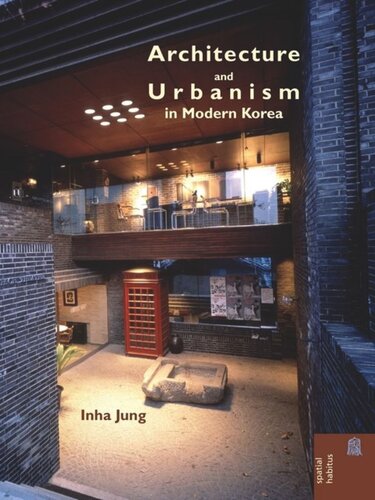

Most ebook files are in PDF format, so you can easily read them using various software such as Foxit Reader or directly on the Google Chrome browser.
Some ebook files are released by publishers in other formats such as .awz, .mobi, .epub, .fb2, etc. You may need to install specific software to read these formats on mobile/PC, such as Calibre.
Please read the tutorial at this link: https://ebookbell.com/faq
We offer FREE conversion to the popular formats you request; however, this may take some time. Therefore, right after payment, please email us, and we will try to provide the service as quickly as possible.
For some exceptional file formats or broken links (if any), please refrain from opening any disputes. Instead, email us first, and we will try to assist within a maximum of 6 hours.
EbookBell Team

4.8
14 reviewsAlthough modernization in Korea started more than a century later than in the West, it has worked as a prominent ideology throughout the past century—in particular it has brought radical changes in Korean architecture and cities. Traditional structures and ways of life have been thoroughly uprooted in modernity’s continuous negation of the past. This book presents a comprehensive overview of architectural development and urbanization in Korea within the broad framework of modernization.
Twentieth-century Korean architecture and cities form three distinctive periods. The first, defined as colonial modern, occurred between the early twentieth century and 1945, when Western civilization was transplanted to Korea via Japan, and a modern way of life, albeit distorted, began taking shape. The second is the so-called developmental dictatorship period. Between 1961 and 1988, the explosive growth of urban populations resulted in large-scale construction booms, and architects delved into modern identity through the locality of traditional architecture. The last period began in the mid-1990s and may be defined as one of modernization settlement and a transition to globalization. With city populations leveling out, urbanization and architecture came to be viewed from new perspectives.
Inha Jung, however, contends that what is more significant is the identification of elements that have remained unchanged. Jung identifies continuities that have been formed by long-standing relationships between humans and their built environment and, despite rapid modernization, are still deeply rooted in the Korean way of life. For this reason, in the twentieth century, regionalism exerted a great influence on Korean architects. Various architectural and urban principles that Koreans developed over a long period while adapting to the natural environment have provided important foundations for architects’ works. By exploring these sources, this carefully researched and amply illustrated book makes an original contribution to defining modern identity in Korea’s architecture, housing, and urbanism.